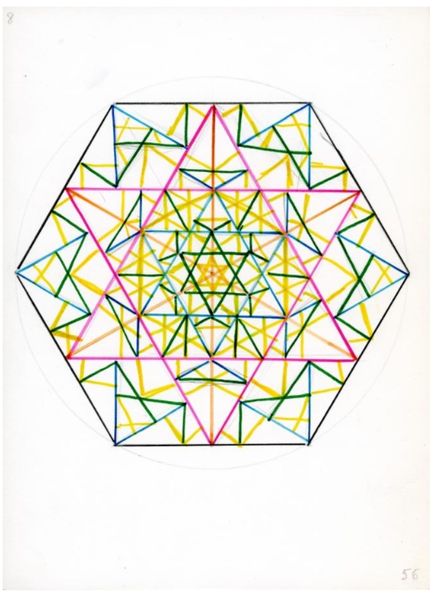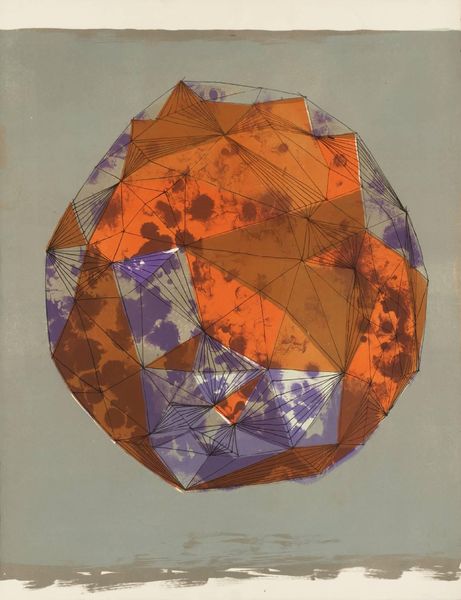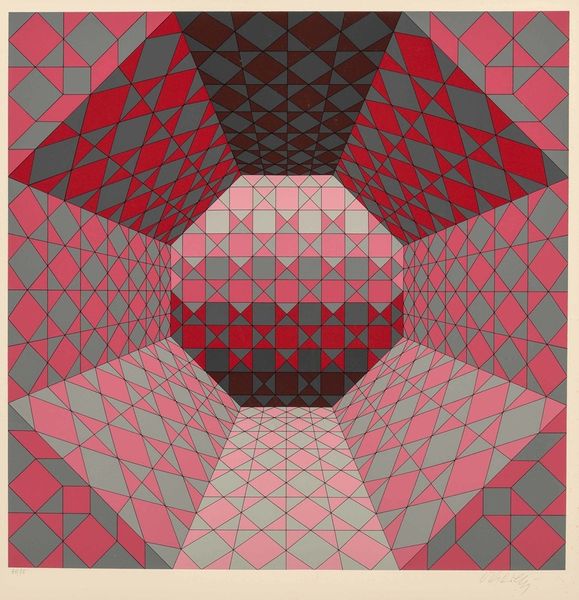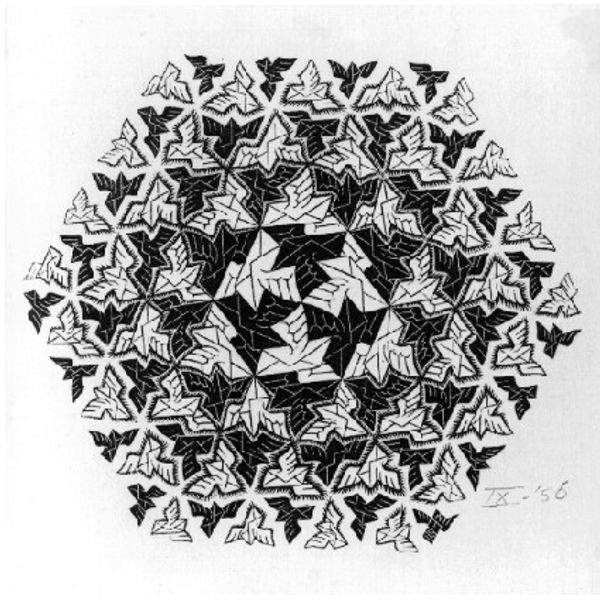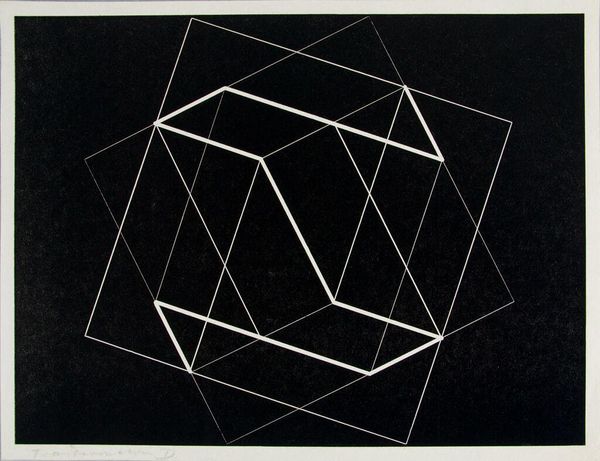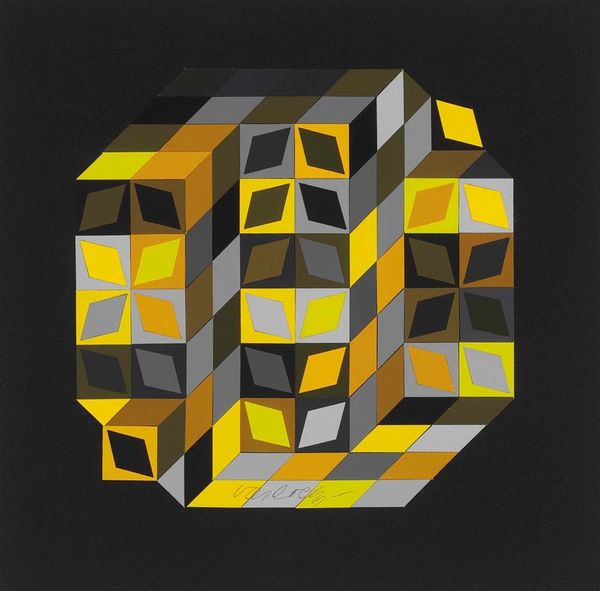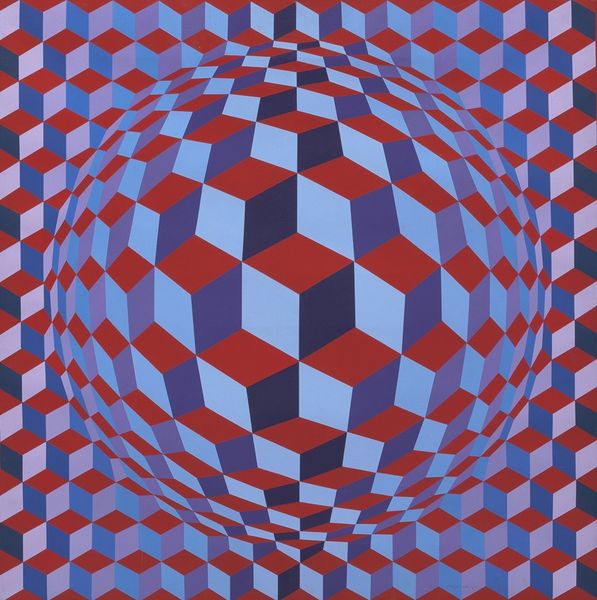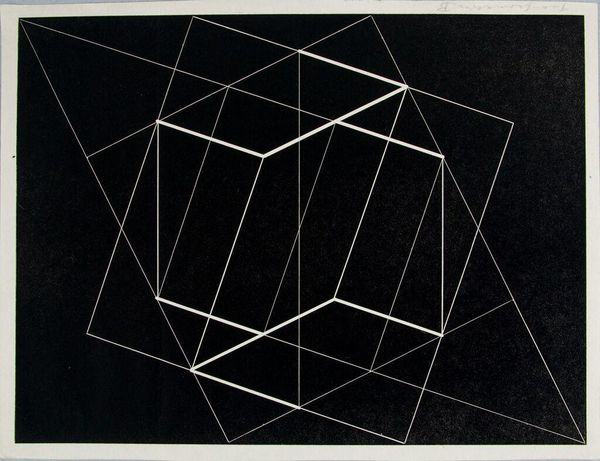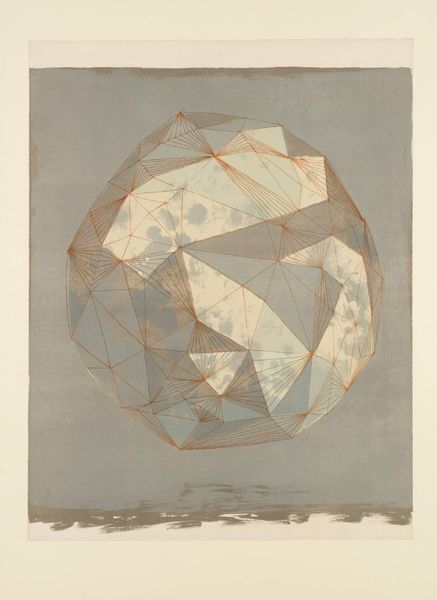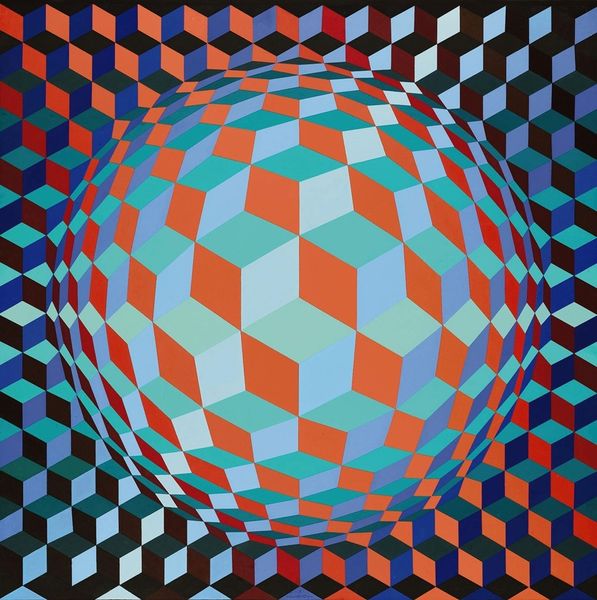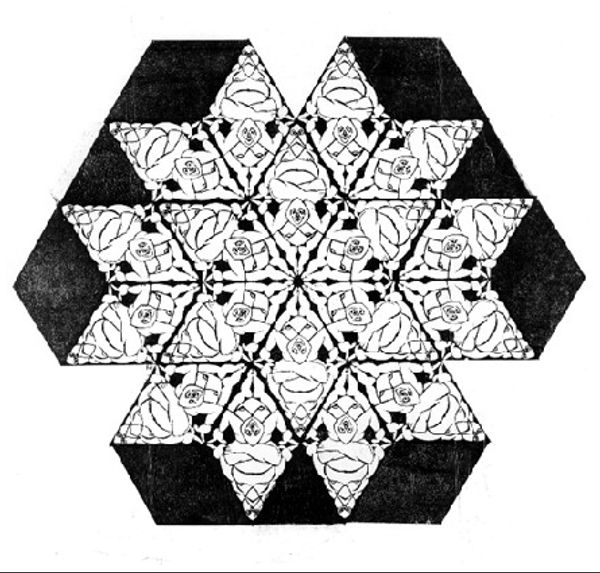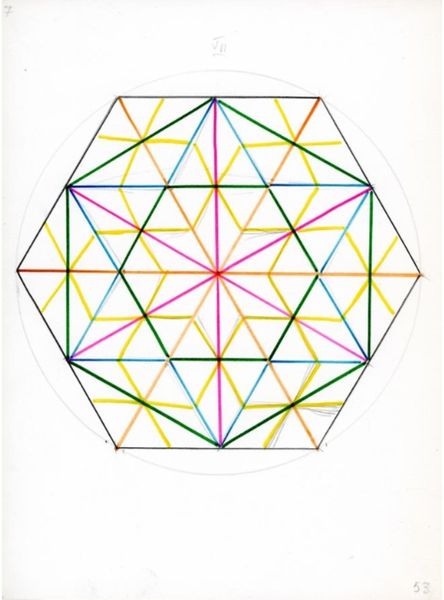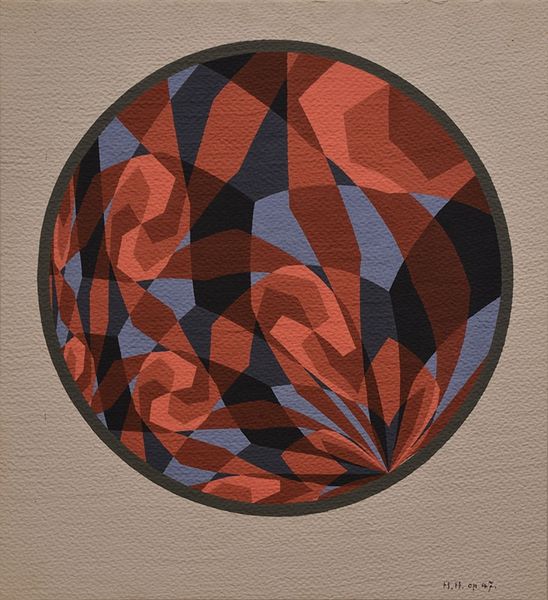
graphic-art, print
#
graphic-art
#
op-art
# print
#
form
#
geometric
#
line
#
pattern repetition
#
modernism
Copyright: M.C. Escher,Fair Use
Editor: Here we have M.C. Escher's "Four Regular Solids," created in 1961. It’s a print, and immediately, I'm struck by how the geometric shapes create a kind of optical puzzle. It almost vibrates on the page! What's your take on this Escher print? Curator: Ah, Escher! Always a delight to get lost in his worlds. It's more than just a puzzle, though, isn’t it? I find myself pondering the tension between the finite and the infinite, the concrete and the conceptual. Notice how Escher uses lines and shading to suggest depth, yet it's all a flat plane. What does that play of dimensions evoke in you? Editor: It makes me think about how we perceive reality – that it's all constructed. Is Escher playing with math, or philosophy, or both? Curator: Absolutely both! Escher was fascinated by mathematics, but his art delves into much more profound territories. He pulls on ideas about space and perspective, but also plays with the boundaries of what we see versus what we *think* we see. You know, his patterns often remind me of a kaleidoscope...fragments turning and re-turning in our mind's eye. Editor: A kaleidoscope! I like that image. So, it’s not just a pretty pattern, but also an exploration of perception and reality. Curator: Precisely. Escher invites us to question our assumptions, to peek behind the curtain of the everyday and wonder at the hidden geometries that underpin our world. He encourages the kind of flexible thought that connects us. Editor: I will definitely look at Escher's art with a different set of eyes from now on. Curator: That's the joy of art, isn't it? Each piece a door, each perspective a new world to explore.
Comments
No comments
Be the first to comment and join the conversation on the ultimate creative platform.
